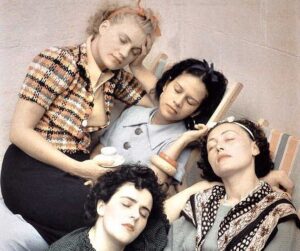
I have friends and acquaintances who have no memory of me before I was writing my novel Swimming with Tigers because it goes back that far into the past. It was some time around the summer of 2008 that the idea came to me to base a historical novel on the women artists involved with the surrealist movement in the 1930s.
Devising the main characters and doing the research
My strategy in the planning stages was to learn all I could about the women artists of surrealism and to create a female character by taking bits and pieces of biography and artwork from several of them. In this way, I made a composite main character originally called Vanessa and, finally, Penelope.
The basis for my other main female character, Suzanne, was a semi-mythic figure called Nadja. She was a peripheral but important woman associated with the surrealist movement, and the subject of a famous book by surrealism’s leader André Breton. My plan was that these two female characters would form a strong friendship and, together, negotiate the insidious sexism of the time and within the art world. They would also experience the outbreak of World War 2.
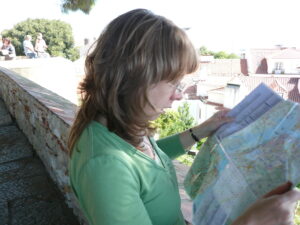
I did lots of reading, finding out and going to art galleries. Also, with my husband who knew no details about the novel I was planning apart from the surrealist angle, I went on several wonderful holidays to research the locations. We visited Cadaqués, Paris, Lisbon and Lille. We also went to Kingston in Surrey (in the UK) because, soon after the two main female characters came to me, I decided that my novel would be a ‘time slip’ meaning that it would also include a more recent timeline.
As it was originally written, Swimming with Tigers contained a ‘found manuscript’ all about Penelope and Suzanne which came into the possession of Vera, a librarian living in London in the 1960s. The found manuscript was reproduced in full in the novel and interspersed with Vera’s life and reactions to reading the manuscript which turned out to have a personal connection to her and her ancestry.
It’s finished, but…
The first draft was finished in two years, by July 2010, and I asked several friends to read it. Rewrites followed, and have continued to follow. In fact, I can identify at least 11 significant rewrites, and countless smaller revisions from 2010 to the present.
In 2011, I started the long, demotivating process of submitting to agents and small publishers. I now have a fairly impressive score of over 50 rejections but in 2014 I had a callback from the Welsh women’s press Honno, based in Aberystwyth. Having sent out my novel only a handful of times at that point, I genuinely thought that was it: I would be published! But no. There was a deafening silence from Honno, despite my repeated inquiries and, after a couple of years, I had to give up (although I shouldn’t have, as I’ll go on to explain).
I continued to submit, rewrite and resubmit. 2015 was a good year because I was long-listed in a big international writing competition and I added this accolade to my submission letters. Two more prestigious long-listings followed.
A few years after this I was noticed by a literary agent online and subsequently met up with her at a writing conference. Having looked at my synopsis, she said that novels about the second world war were going out of style and declined to represent me. Swimming with Tigers is only coincidentally about the war, but I think we can all agree she has been proved wrong on the popularity of novels set in World War 2, which continues to grow.
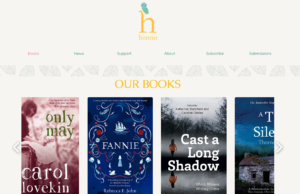
In 2019, I heard that Honno was running a Meet-the-Editor event, so I re-sent my submission and went along to the offices in Aberystwyth to ask what had happened back in 2014. The sad truth was that my manuscript had gone astray, most likely lost down the back of someone’s sofa. The commissioning editor apologised and gave me some feedback. Her view was that Swimming with Tigers, still a timeslip novel, contained two books and her advice to me was to rewrite it as two separate novels: one about Vera, and one about Penelope and Suzanne. I went away feeling absolutely furious. I ranted to the kind friend who had driven me there for four hours through deep snow that this editor didn’t know what she was talking about.
Time to ‘go indie’
By 2022 I decided that the time to keep submitting to agents had passed. I was heart-sore and exhausted by it and during the years in which I had been setting my sights on getting an agent and being published by a traditional publisher, self–publishing had been growing and developing and now looked like an attractive option.
As I looked into self-publishing, I finally accepted that the editor at Honno was probably right: a novel solely about women surrealists in the 1930s would be much more straightforward to market than a novel with a complicated timeslip plot. So I got to work. I jettisoned poor Vera (fear not, I have an idea for a new novel to put her into) and expanded the sections with Penelope and Suzanne into a full-length novel.
My final revisions were done after paying for a professional editor to look at Swimming with Tigers in 2023. Now here I am on the verge of publishing the novel that has been part of my life, and the lives of all the people who know me well, for 16 years. And that’s a story in itself, isn’t it?
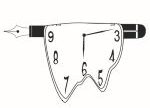
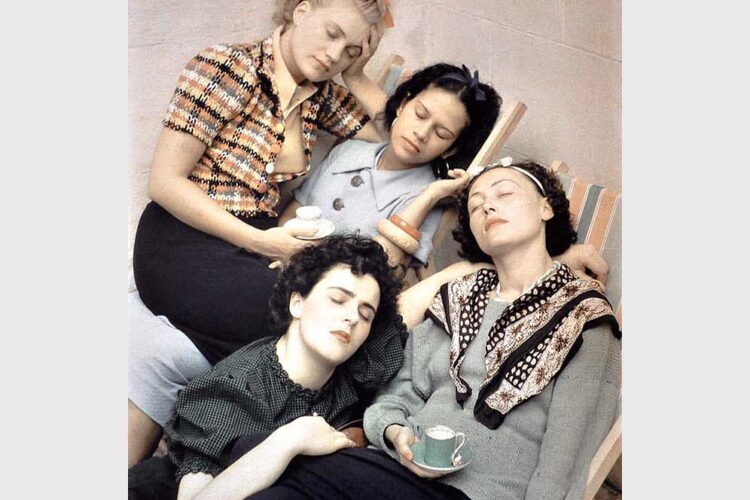
What perseverance! Well done you for keeping going.
Thanks, Sue. Or you could call it extreme stubbornness!
Great account of your novel’s development-yes, the creative seed is always ‘there’ gathering strength, germinating, in the ‘unconscious’ (sometimes very slowly), until the most propitious sprouting time arrives! x
I look forward to reading it, Kathy, and maybe your next novel could be the story of an author’s struggle to publish what became a best seller and award-winning masterpiece.
That would be wonderful! But it’ll be enough for me to have a good number of readers like yourself.
i was warned about Honno
by an author I met in
Aberystwyth. They lost her manuscript too ! like you – she went on to publish – well done & congratulations. looking forward to your launch night & buying a copy to read
Yes, I think I wasn’t the only one but, to be fair, Honno do a great job with very little funding and very few staff. They are one of a very few completely independent women’s presses left in the UK and that’s a really important achievement. Also, it didn’t come into this post, but I had a huge lot of help with editing from Rebecca F John when she was at Honno which made a big difference. The advice to cut the MS in half was also good, although, as I say here, unwelcome at the time!
I can’t wait to see what you think of the book, Elaine: time for you to be the ‘teacher’ and give me feedback rather than the other way around. Yikes!!